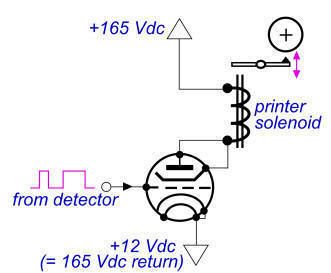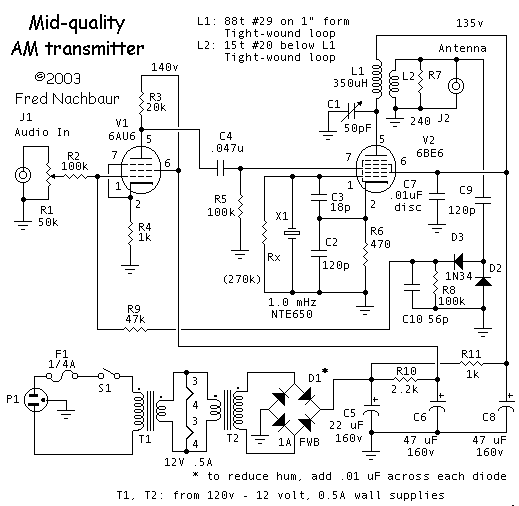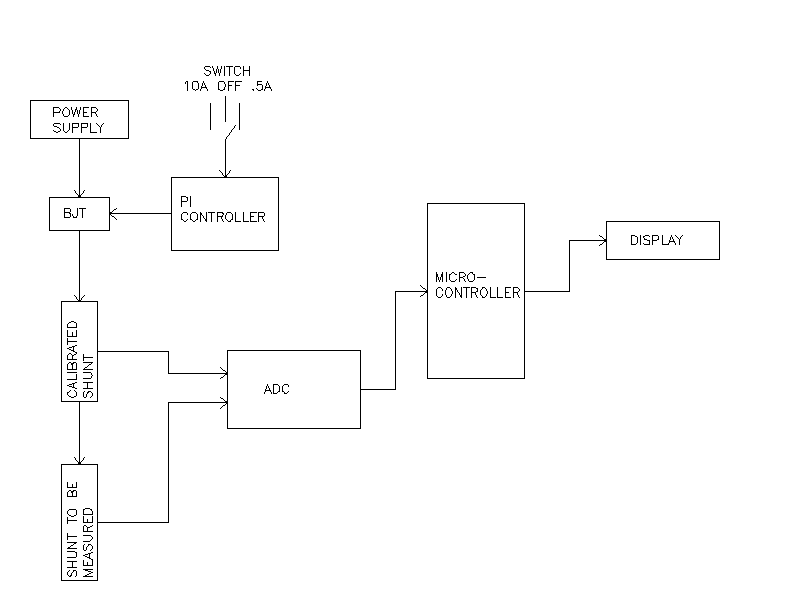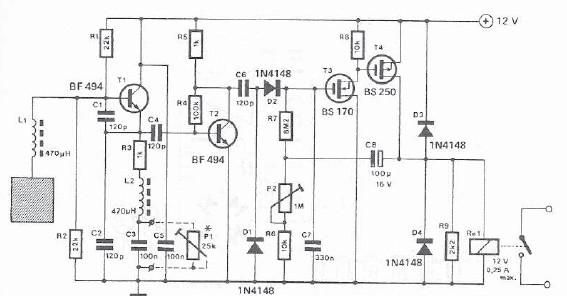
bh1417f fm stereo transmitter electronic project
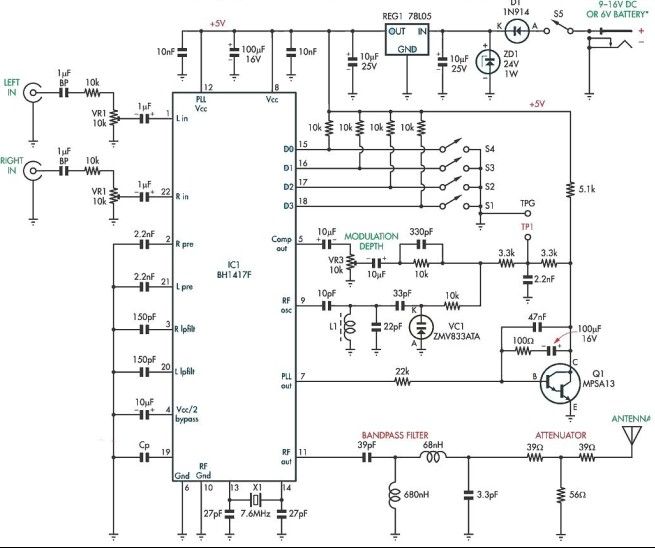
This stereo FM modulator circuit utilizes the BH1417F FM stereo transmitter IC, which includes a stereo modulator for generating stereo composite signals and an FM transmitter for broadcasting an FM signal wirelessly. The stereo modulator produces a composite signal that consists of the MAIN, SUB, and pilot signals derived from a 38kHz oscillator. The BH1417F stereo FM transmitter is capable of broadcasting high-quality signals over a distance of approximately 20 meters, making it suitable for transmitting music from a CD player or any other audio source to be received at another location. The L1 coil is constructed with 2.5 turns of 0.5 - 1mm enamelled copper wire (ECW) wound onto a tapped coil former, which is fitted with an F29 ferrite slug. Alternatively, a commercially available 2.5 turns variable coil may be used.
The BH1417F FM stereo transmitter IC is a versatile component that integrates both the stereo modulation and transmission functions within a single chip. The stereo modulator's ability to generate composite signals is essential for maintaining audio quality during transmission. The MAIN signal carries the primary audio content, while the SUB signal provides additional stereo information, and the pilot signal, generated from the 38kHz oscillator, is crucial for demodulation at the receiver end.
The circuit's design allows for a range of applications, particularly in personal broadcasting scenarios where users wish to transmit audio wirelessly within a limited distance. The effective range of approximately 20 meters makes it suitable for home use, allowing music to be streamed to various locations within a residence or small venue without the need for extensive wiring.
The construction of the L1 coil is a critical aspect of the transmitter's performance. The specified 2.5 turns of enamelled copper wire ensure that the coil is capable of generating the necessary inductance for efficient operation. The use of an F29 ferrite slug enhances the coil's magnetic properties, improving the overall efficiency of the transmitter. The option to use a commercially available variable coil provides flexibility in tuning the transmitter for optimal performance, allowing users to adjust the frequency as needed to avoid interference with other signals.
Overall, this circuit design exemplifies an effective approach to FM transmission, combining ease of use with quality audio performance, making it a valuable tool for hobbyists and professionals alike in the field of wireless audio broadcasting.This stereo FM stereo modulator circuit use the BH1417F FM stereo transmitter IC which consists of a stereo modulator for generating stereo composite signals and a FM transmitter for broadcasting a FM signal on the air. The stereo modulator generates a composite signal which consists of the MAIN, SUB, and pilot signal from a 38kHz oscillator.
This BH1417F stereo FM transmitter is capable of broadcasting good quality signals over a range of about 20 meters and is ideal for broadcasting music from a CD player or from any other signal source so that it can be picked up in another location. L1 coil comprises 2. 5 turns of 0. 5 - 1mm enamelled copper wire (ECW) wound onto a tapped coil former fitted with an F29 ferrite slug. Alternatively, you may also use any commercially made 2. 5 turns variable coil. 🔗 External reference
The BH1417F FM stereo transmitter IC is a versatile component that integrates both the stereo modulation and transmission functions within a single chip. The stereo modulator's ability to generate composite signals is essential for maintaining audio quality during transmission. The MAIN signal carries the primary audio content, while the SUB signal provides additional stereo information, and the pilot signal, generated from the 38kHz oscillator, is crucial for demodulation at the receiver end.
The circuit's design allows for a range of applications, particularly in personal broadcasting scenarios where users wish to transmit audio wirelessly within a limited distance. The effective range of approximately 20 meters makes it suitable for home use, allowing music to be streamed to various locations within a residence or small venue without the need for extensive wiring.
The construction of the L1 coil is a critical aspect of the transmitter's performance. The specified 2.5 turns of enamelled copper wire ensure that the coil is capable of generating the necessary inductance for efficient operation. The use of an F29 ferrite slug enhances the coil's magnetic properties, improving the overall efficiency of the transmitter. The option to use a commercially available variable coil provides flexibility in tuning the transmitter for optimal performance, allowing users to adjust the frequency as needed to avoid interference with other signals.
Overall, this circuit design exemplifies an effective approach to FM transmission, combining ease of use with quality audio performance, making it a valuable tool for hobbyists and professionals alike in the field of wireless audio broadcasting.This stereo FM stereo modulator circuit use the BH1417F FM stereo transmitter IC which consists of a stereo modulator for generating stereo composite signals and a FM transmitter for broadcasting a FM signal on the air. The stereo modulator generates a composite signal which consists of the MAIN, SUB, and pilot signal from a 38kHz oscillator.
This BH1417F stereo FM transmitter is capable of broadcasting good quality signals over a range of about 20 meters and is ideal for broadcasting music from a CD player or from any other signal source so that it can be picked up in another location. L1 coil comprises 2. 5 turns of 0. 5 - 1mm enamelled copper wire (ECW) wound onto a tapped coil former fitted with an F29 ferrite slug. Alternatively, you may also use any commercially made 2. 5 turns variable coil. 🔗 External reference
